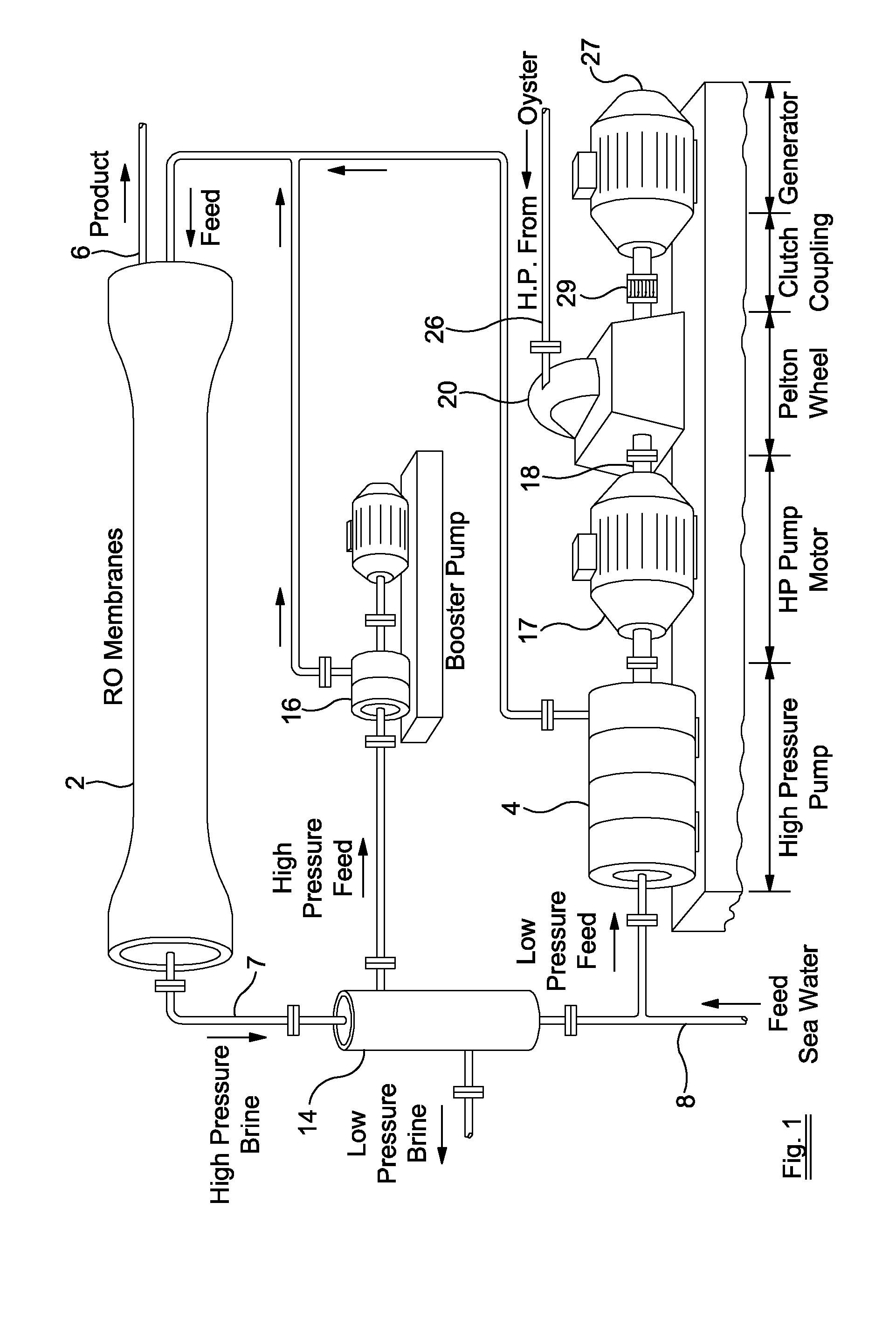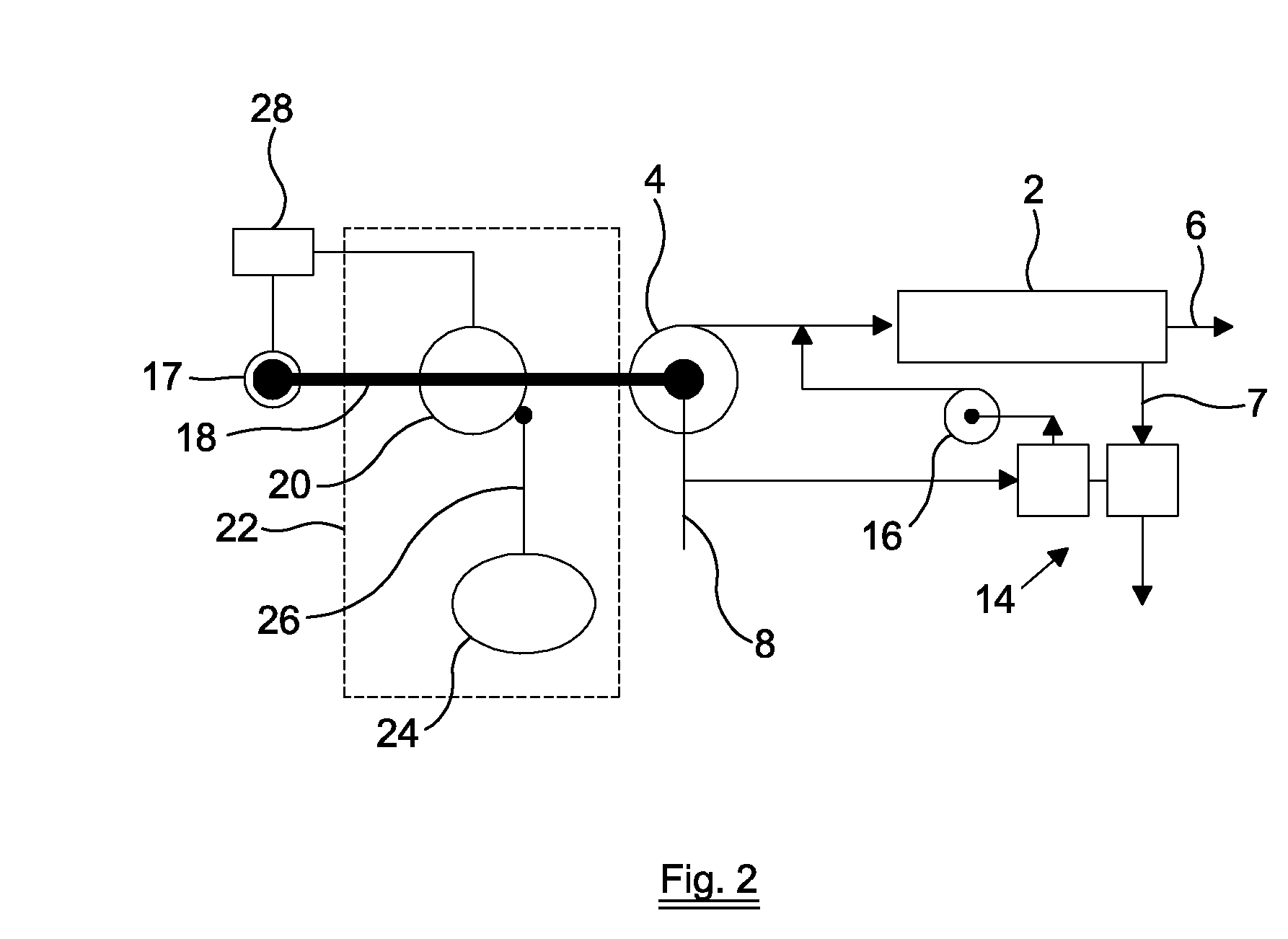Desalination system and method
a desalination system and desalination method technology, applied in the field of power systems, can solve the problems of high energy consumption of reverse osmosis desalination systems, associated environmental concerns, and power hungry desalination systems, and achieve the effects of simple system, simple system, and greater flexibility and control
- Summary
- Abstract
- Description
- Claims
- Application Information
AI Technical Summary
Benefits of technology
Problems solved by technology
Method used
Image
Examples
Embodiment Construction
[0043]Embodiments of the present invention are now described, by way of example only. FIG. 1 is a schematic diagram of a desalination system according to one embodiment. The system comprises a reverse osmosis device 2 that is connected on the input side to a high pressure pump 4 for supplying water to be desalinated. The reverse osmosis device 2 is connected on the output side to an outlet 6 that outputs desalinated water and to a waste water output 7 that outputs concentrated brine.
[0044]The high pressure pump 4 is connected to a water supply input 8 that provides water to be desalinated, via a low pressure pre-treatment system (not shown) for filtering and otherwise pre-treating water to be desalinated, to remove suspended solids and marine organisms which may foul the membrane of the reverse osmosis device 2. The pre-treatment system comprises multi-media sand filters and cartridge filters.
[0045]The waste water output 7 of the reverse osmosis device 2 is connected to a pressure e...
PUM
 Login to View More
Login to View More Abstract
Description
Claims
Application Information
 Login to View More
Login to View More - Generate Ideas
- Intellectual Property
- Life Sciences
- Materials
- Tech Scout
- Unparalleled Data Quality
- Higher Quality Content
- 60% Fewer Hallucinations
Browse by: Latest US Patents, China's latest patents, Technical Efficacy Thesaurus, Application Domain, Technology Topic, Popular Technical Reports.
© 2025 PatSnap. All rights reserved.Legal|Privacy policy|Modern Slavery Act Transparency Statement|Sitemap|About US| Contact US: help@patsnap.com



